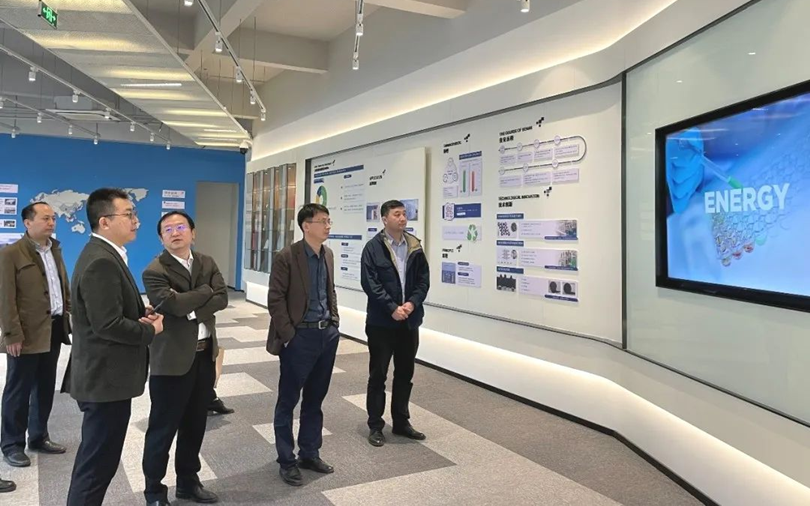Recently, Gao Zhaobing, Vice President of the Shanghai Branch of the Chinese Academy of Sciences, and Li Xiaoliang, Deputy Director of the Science and Technology and Economic Committee of Pudong New Area, Shanghai, led a delegation to conduct a field survey at the Jiangsu Production and Research Base of Benan Energy. Zhao Xiaolong, Director of the Science and Technology Development Department and Head of the Science and Technology Cooperation Office of the Shanghai Branch of the Chinese Academy of Sciences, and Gao Qun, Head of the Equipment Office of the Science and Technology and Economic Committee of Pudong New Area, participated in the survey. Qin Chao, Deputy Director of the Taicang Park Office of the Shanghai Institute of Ceramics and Vice President of the Jiangsu Advanced Inorganic Materials Research Institute, also participated in the discussion and exchange.
The purpose of this research is to understand the company's development history, representative products, and automated production and manufacturing lines. Leaders at all levels visited the company's exhibition hall, participated in discussions and exchanges, and inspected the automated production and manufacturing lines.
At the symposium, Dr. Liu Yu, Director of the New Material Pilot R&D Center of Shanghai Institute of Ceramics and Chief Scientist of Benan Energy, introduced the development history, current status, and future plans of Benan Energy to the participating representatives, and shared the technological achievements the company has made in recent years. Leaders at all levels expressed their high appreciation for the achievements made by Benan Energy and stated that they would vigorously support the implementation of the company's projects and provide guarantees and incentives for the application and transformation of technological achievements.
Finally, Gao Zhaobing, Vice President of the Shanghai Branch of the Chinese Academy of Sciences, delivered a speech. He stated that the research activity was systematic and in-depth, fully reflecting the deep integration of government, industry, and research. He hoped that the research institute would fully leverage its role as a "national team" technology incubator, providing technical support and intellectual assistance for the government's innovation development strategy and industry development. He also hoped that local governments could explore and provide more institutional and incentive support, injecting sustained momentum into scientists and technological innovation development, promoting a virtuous cycle of achievement transformation, and achieving a win-win situation for all parties.




